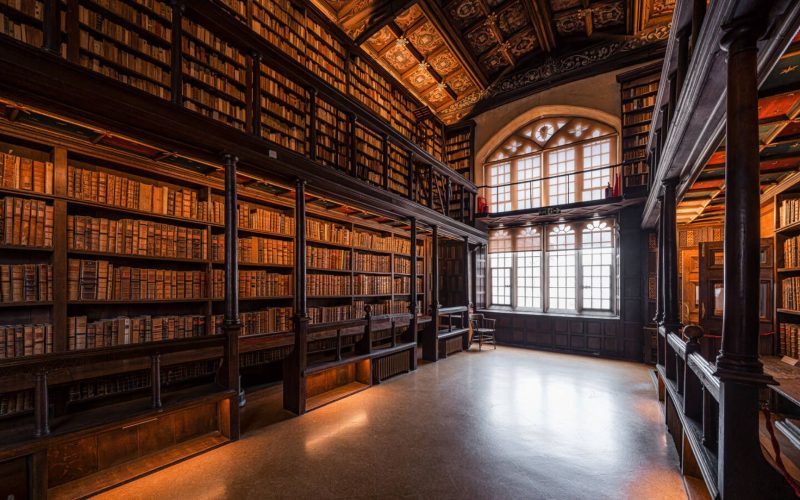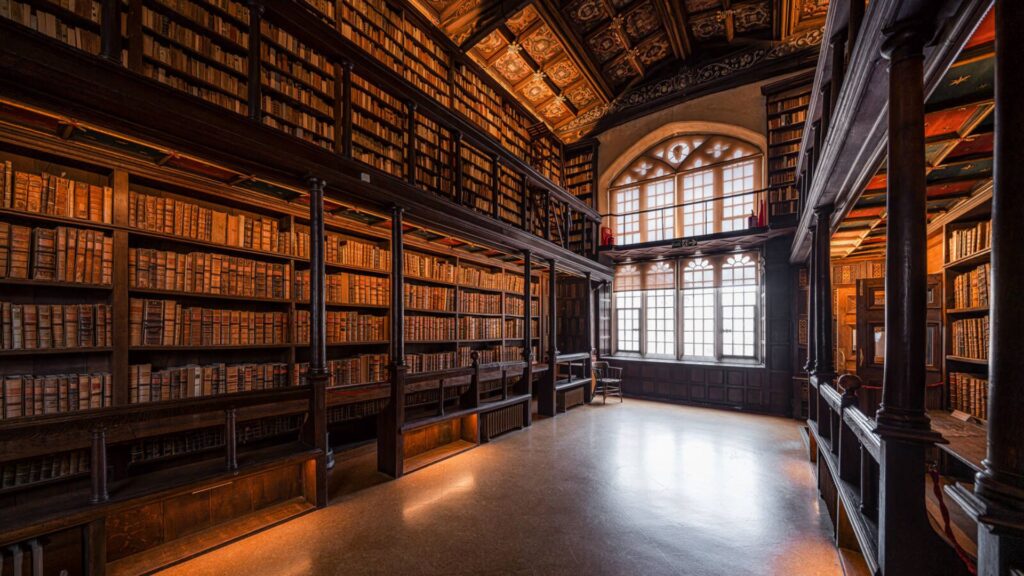Nestled within the historic heart of Oxford, England, the Bodleian Library stands as an architectural wonder that has captivated scholars, bibliophiles, and visitors from around the world. This iconic institution, with its rich history and stunning neo-Gothic design, is revered as one of the most significant and influential libraries globally.
The Genesis of the Bodleian Library
The origins of the Bodleian Library trace back to the 14th century when Duke Humfrey of Gloucester donated a collection of books to the University of Oxford in 1439. This initial donation laid the foundation for what would become one of the world’s greatest research libraries. Sir Thomas Bodley, a diplomat and scholar, is credited with the library’s modern establishment. In 1602, Bodley restored and rebuilt the library, transforming it into a treasure trove of knowledge with his vast collection of books and manuscripts. By the mid-17th century, it had become one of Europe’s most significant research libraries.
Architectural Splendor: The Neo-Gothic Design
The Bodleian Library’s architectural grandeur is a testament to its enduring legacy. The library’s iconic neo-Gothic design, with intricate stone carvings, soaring arches, and towering spires, is integral to Oxford’s skyline. The main building, known as the Radcliffe Camera, designed by James Gibbs and completed in 1749, is a masterpiece of neo-Gothic architecture. Its circular design, domed structure, and ornate exterior are breathtaking. Inside, the high ceilings, elegant columns, and rows of bookshelves create a serene scholarly ambiance.
Beyond the Radcliffe Camera, the Bodleian complex includes interconnected buildings with distinct architectural characters. The Divinity School, a 15th-century structure with exquisite Gothic vaulted ceilings, and the Duke Humfrey’s Library, with its 17th-century interiors, highlight the library’s historical significance and architectural diversity.
The Significance of the Bodleian Library
The Bodleian Library is more than an architectural marvel; it is a bastion of knowledge and a hub of intellectual discourse. It boasts an unparalleled collection of books, manuscripts, and maps that span the breadth of human knowledge. Its role as a legal deposit library, which grants it the right to receive a copy of every book published in the UK, solidifies its status as a crucial repository of the nation’s literary and cultural output.
As a hub of scholarly discourse, the Bodleian Library has hosted lectures, exhibitions, and events attracting leading thinkers, writers, and intellectuals. Its impact on the University of Oxford is profound, serving as a vital resource for generations of students and nurturing their curiosity and academic pursuits.
Exploring the Bodleian Library
Visitors to the Bodleian Library are immediately captivated by its grand architecture and historical ambiance. Guided tours offer a unique opportunity to delve into the library’s rich history and significance. From the Radcliffe Camera’s intricate stone carvings to the Divinity School’s stunning vaulted ceilings, each corner of the library tells a story of intellectual pursuit and cultural heritage.
The Bodleian Library remains a beacon of knowledge and inspiration, captivating visitors and scholars alike. Its rich history, architectural splendor, and commitment to preserving human cultural heritage ensure its legacy endures for generations to come.











